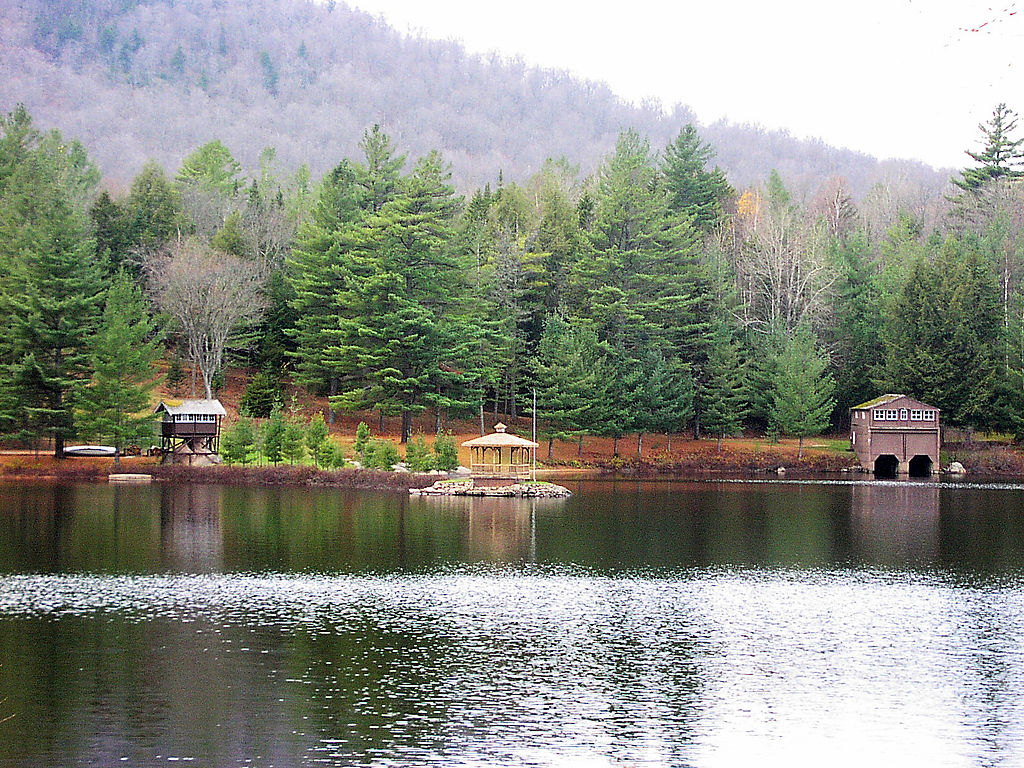Protecting water in the Adirondacks
The Adirondacks represent a complex system of land, water, and wildlife in which humans in the 21st century must coexist. The inevitable result of intermingling between wild Adirondack ecosystems and humans, is the destruction of that wildlife. There is much debate on how to better protect land based wildlife in the park, but significantly less focus is spent on water even though it may well be more important. This lack of focus from the general public likely stems from an approachable appreciation for large land mammals such as bears and moose. These giant roamers are popularized by American culture which results in a strong “Protect the bears!” mentality while giving way on a “Protect the trout!” mentality. Adirondack lakes and ponds are in some cases highly protected from human traffic and interaction, but in the majority of cases, see a duality of natural and man-made harm.

Most of the natural harm that comes to bodies of water in the adirondacks is the result of algal bloom. A bacteria called cyanobacteria can rapidly multiply and expand in relatively-still water such as lakes. During the warmer months, cyanobacteria can take advantage of decomposing or soon to decompose matter as a nutrient source. Although cyanobacteria is photosynthetic, nitrates and phosphates which often come from man made fertilizers boost its growth exponentially. In the case of highly isolated lakes and ponds, algae can use decomposing natural matter as that same boost. While fertilizer use during the winter months is prohibited, there is little to no legislation regarding the use of nitrogenous fertilizers during the warmer seasons. Therefore, some of the lakes bordering more populated towns are at higher risk for fertilizers harming water quality. When lakes have significant algal bloom, fish and plant populations within the water may die off because the water becomes toxic. Even though not all cyanobacterial blooms are toxic, they always offset the nutrient balance within an ecosystem.
The other end of the spectrum comes from direct human sources. Even though the Adirondack Park was initially created to be a wildlife preserve with economic extraction on the side, the reverse is true in many places. Out of the 100 largest lakes in the park by acreage, 77 allow for general public use. This means that all of these lakes have roads, infrastructure, and most importantly, boat launches. Both visitors and locals have the ability to use motorized boats on the water. This not only depletes the obvious serenity of a lake, but boats also leak oil and other nasty fuels from their motors. Over time, this can generate an adverse effect on wildlife dependent on a lake. Of the remaining 23 lakes, 13 are privately owned, 5 are motorless lakes, and 3 are motorless but completely inaccessible. This means that out of the 100 largest lakes in the park, only 8 are remotely close to being fully forever wild. Another major detriment comes from road salt application. Thousands of tons of road salt are applied to roads each winter in the adirondacks. When snow and ice melt, the runoff water goes straight into drainage systems and lakes. The increase of salinity in lakes begins to create a toxic environment for wildlife. Protecting lakes and other bodies of water in the park is crucial in retaining equilibrium of wildlife. Land species, not to mention humans, use lake water to drink and plants rely on lake water to keep the water table high in drier months. Protecting water should be just as high of a priority as protecting land wildlife.
Covill, Kimberly. “Water in the Adirondacks.” St. Lawrence University Magazine, 20 Apr. 2017, https://magazine.stlawu.edu/spring-2017/water-adirondacks.
Protect the Adirondacks. The Myth of Quiet, Motor-Free Waters in the Adirondack Park. Protect the Adirondacks, May 2013, https://www.protectadks.org/wp-content/uploads/2013/06/Motor-free-Waters-Report-web-version.pdf.
“Harmful Algal Blooms – a Toxic Hazard in the Adirondacks.” Adirondack.net, https://www.adirondack.net/invasives-harmful-plants/harmful-algal-blooms/.

I am astonished by the information provided in this post. I would have never imagined that algal bloom would be so damaging. I enjoyed that each of your paragraphs are well written and full of information, yet concise. I have recently read a website where there are different options to protect the waters in naturey areas. It’s nice seeing how those options tie back to this post. It was featured in the EPA website if you want to check it out!
This blog provides a great insight on why conserving the water sources is as equal as important as conserving the land. We often tend to forget that most systems in land ecosystem depend on water bodies whether it be the water cycle or the role aquatic animals on the food chain in land. On top of that, availability of clean water is critical to have a healthy wildlife both on land. Eventually if the cleanliness of water bodies are not looked after it would be attractive neither to the tourists or the wildlife.
The artificial moat, connected to the Maastricht river, in my high school was a home to swans and ducks. It was really sad to see their population evidently decreasing, within my two years of attending the school. The main problem in the moat was eutrophication, the main cause of algal bloom, caused by the nutrients brought along by the Maastricht river.
Your blog post reminded me of how early Adirondack settlers experienced typhoid fever as a consequence of contaminated water (Contested Terrain). The Adirondacks’s long history of water contamination makes me question whether human impact on aquatic ecosystems is preventable or reversible.